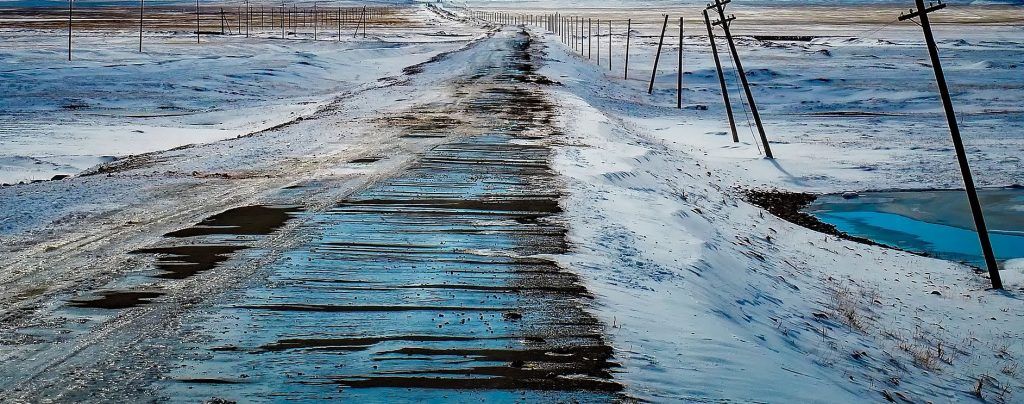Gas, lighting, and the weaponization of climate solutions in the post-truth era
By John Morales | February 19, 2021
 File photo of generic storm and power lines, courtesy of Pixabay
File photo of generic storm and power lines, courtesy of Pixabay
A natural disaster is calamitous. A man-made disaster is infuriating. And a disaster driven by negligence is despicable. But to have politicians deflecting blame and gaslighting their constituents and the nation in an attempt to manipulate people’s perceptions is just revolting.
I cannot imagine what millions of Texans have had to go through this week after one of the coldest outbreaks in decades. Temperatures remained well below freezing for days in places like Houston—which didn’t even see the bitterest of the cold. With 60 percent of Texas homes relying on electric heaters to keep residences warm, a widespread and prolonged power outage led to families trying to survive subfreezing conditions inside their households. In a desperate attempt to keep warm, people were dangerously burning what they could (including fencing, baby blocks and artwork), using charcoal grills indoors, and sleeping in cars. Cases of carbon monoxide poisoning exploded. Meanwhile, plumbing pipes continue to burst in thousands of homes that are simply not weatherized for this level of extreme cold.
By now, the peculiarities of the power grid that feeds the vast majority of Texas have been widely disseminated, but I’ll summarize them here briefly. Texas is the only state in the contiguous United States that has a stand-alone electricity grid. It is supposed to serve 213 of the 254 counties in the state. The Electric Reliability Council of Texas, or ERCOT, has access to a portfolio of over 650 power-generation facilities, with an energy source mix that is 70 percent derived from fossil fuels—coal and gas. Up to 20 percent of its electric power comes from wind (but only half of that in winter), 10 percent from nuclear, and only 1 percent from solar. Portions of this Texas Interconnection, which includes Houston, have been challenged by natural disasters in the recent past, including Major Hurricane Harvey in 2017. But more geographically widespread tests of its resiliency have come in the form of severe cold weather outbreaks—one in 1989, and a relatively recent one in in 2011.
The power companies in Texas failed those tests badly.
The 2011 Arctic cold front produced subfreezing temperatures for four straight days, which led to frozen instrumentation and equipment that forced power plants to shut down. This very same equipment had failed during the 1989 cold blast. Both times, rolling blackouts were the only solution to the lack of sufficient power to feed all customers on the Texas grid. A post-mortem from the Federal Energy Regulatory Commission of what went wrong during the 2011 cold weather event found that Texas power companies’ equipment was not properly weatherized to withstand such cold temperatures. The 2011 report also found that lack-of-weatherization lessons learned in the 1989 outbreak were essentially ignored in the years leading up to the 2011 storm.
Now after this week’s calamity, information is emerging that the commission’s recommendations after 2011 were also pretty much ignored. A state law after the 2011 freeze paved the way for the Public Utility Commission of Texas to ask (nicely, please!) power companies to disclose their weatherization efforts. But the statute contained no mandate, and the utilities again passed on investments to harden their equipment.
While the February 2021 Texas deepfreeze was in many ways more severe than the 1989 and 2011 cold snaps, it’s not much of a stretch to deduce that any winterizing efforts in the last 30 years would have prevented the multiple failures that were observed this time. But that might have been too much of an optional expense for the Texas power producers. And because the Texas Interconnection is an island detached from the other US power grids, once the ERCOT power sources froze up again in 2021, four million households in the state lost electrical power. There has been great suffering, and dozens of deaths. Given that ERCOT is ultimately overseen by Texas politicians, you’d think elected leaders in the state would stand up and accept responsibility for the failings of their state’s great independent-but-now-failed electric grid.
Nope. Not in this post-truth America.
One full day prior to holding his first press conference on the growing disaster, Texas Republican Governor Greg Abbott went on Fox News to falsely imply that renewable energy was to blame for the blackouts because “our wind and our solar got shut down.” Remember, solar accounts for only 1 percent of the state’s energy portfolio and ERCOT’s own projections for wind-power’s winter contribution to the grid is limited to 10 percent. Yes, some windmills froze up because, like for so many of Texas’ other energy assets, no preparedness measures were taken for the cold. But by a factor of five or six, it was the natural gas portion of the energy portfolio that failed to deliver.
The governor went as far as saying that the Green New Deal would be “deadly”—as in, Americans could die just like Texans if the United States embraced a transition to green energy. Three other US Republican Congresspeople tweeted out similar falsehoods. This is gaslighting at its worst.
Abbott and other allies of the fossil fuel industry appear to be keenly aware that we are firmly now in a post-truth era. Objective facts are less influential in shaping public opinion than appeals to emotion and personal belief. Once a narrative that serves a person’s worldview is found, confirmation bias takes over. Sean Hannity at Fox knows this and leverages it masterfully. But Governor Abbott and others should have the ethical fortitude to set the record straight instead of following the tired diatribes employed by Big Oil, the Koch Brothers, and the many special interests aligned with the fossil fuel industry in their decades-long disinformation campaign aimed at keeping Americans confused about climate change and the promising solutions to the burgeoning environmental crisis.
How sad is it that so many hope and pray for green energy to fail? Why? What are they so afraid of? Solar and wind costs continue to drop even as technology improves. Grid-scale battery storage is a rapidly emerging option that will be needed to maintain the power supply 24/7. And yes, nuclear energy from lower-cost new generation sodium-cooled reactors can and should be a part of the future energy portfolio.
A modernized, interconnected, resilient, and less-centralized power grid energized by these emissions-free sources would prevent the humanitarian crisis that unfolded in Texas. And it is likely to be able to better withstand some of the extremes that the warming planet will throw at us in coming decades.
Together, we make the world safer.
The Bulletin elevates expert voices above the noise. But as an independent nonprofit organization, our operations depend on the support of readers like you. Help us continue to deliver quality journalism that holds leaders accountable. Your support of our work at any level is important. In return, we promise our coverage will be understandable, influential, vigilant, solution-oriented, and fair-minded. Together we can make a difference.
Keywords: Texas power failure, climate change, climate crisis, cold, fossil fuel industry, global warming, misinformation, natural gas, renewables
Topics: Climate Change, Columnists
















I live in Ontario, Canada. The temperature here has not been above freezing for weeks. It has gone down to about 15 degrees (F) at night. Only once in my lifetime (I’m 75) have I experienced a four-day loss of electricity (due to the an ice storm that downed power lines in 1998). Having an excellent wood stove, however, was a great help. It was one of the worst natural disasters in Canadian history. About 35 people died from carbon monoxide poisoning, trauma, fire and hypothermia. On the other hand, the past couple of weeks have seen temperatures as low… Read more »
Mr Morales I was with you until you advocated for small nuclear reactors. More nuclear energy is not necessary to weatherize fossil fuel infrastructure. With all due respect, it feels like your own bit of gaslighting.
We need to go all-out on building wind, solar and battery storage, and not wait for presumably safer, presumably cheaper, presumably nuclear waste-solving nuclear technologies to be proven. Wind, solar and battery technologies are well-known, ever cheaper, and infinitely safer on a bad day. SMRs are pie in-the-sky. Allison Macfarlane, former chair of the NRC, commented on SMRs, specifically molten salt reactors: “Nobody has ever set up a molten nuclear reactor and used it to produce electricity”. Furthermore, she says SMR companies are vague in the details of how SMRs will solve the nuclear waste problem. See: https://www.cbc.ca/news/canada/new-brunswick/nuclear-waste-reactors-new-brunswick-allison-macfarlane-moltex-arc-1.5873542